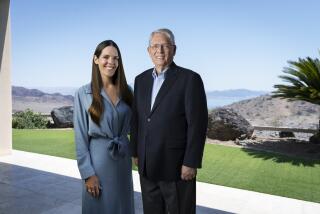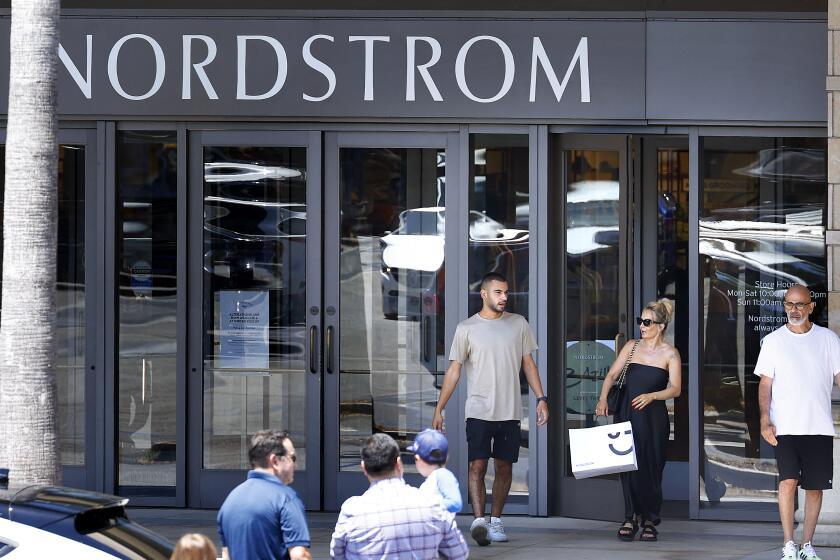Cancer Center, Drug Firm Fight Over Biotech Riches
- Share via
A little-noticed lawsuit that goes to trial today in Los Angeles County Superior Court marks the culmination of a decades-long conflict over the enormous riches from the invention that launched the biotech revolution.
At stake is as much as $500 million, an extraordinary potential windfall for City of Hope National Medical Center in Duarte, as well as a possibly huge financial blow to biotechnology giant Genentech Inc.
City of Hope, a world-renowned, nonprofit cancer center with an annual budget of $328 million, pioneered bone marrow transplants for cancer patients and recently opened a facility to make small batches of experimental drugs for untreatable diseases. But it was its groundbreaking work in biotechnology in the late 1970s that helped launch an industry--and spawned an epic feud.
Two City of Hope biologists, funded by Genentech, at the time an obscure start-up, were the first to produce human insulin, the world’s first biotechnology drug. The 1978 breakthrough brought incredible wealth to City of Hope and to scientists Arthur D. Riggs and Keiichi Itakura, and fueled Genentech’s growth.
Twenty-three years later, City of Hope claims Genentech has cheated it out of hundreds of millions in royalties stemming from its discovery. It alleges that Genentech repeatedly violated the 1976 contract that established the collaboration that led to the landmark drug.
Genentech, based in South San Francisco, denies the allegations. “We’ve had this very long-standing relationship with City of Hope and interpreted the contract one way all these years. It is interesting that no one raised these issues until recently,” said Sabrina Johnson, spokeswoman for Genentech, which had sales of $1.7 billion last year.
Conflict Dates Back to Genesis of Biotech
The contract gave Genentech the patents on the technique Riggs and Itakura used to produce human insulin in common bacteria. City of Hope, in return, agreed to accept a 2% royalty on sales of products that resulted from the patents--though which products fall under the contract is in dispute. Complicating the matter is the fact that it was chiefly negotiated by a former City of Hope administrator who suffers from memory loss, and a co-founder of Genentech who is dead.
Genentech argues the agreement is limited to proteins that City of Hope scientists helped develop: human insulin, human growth hormone and somatostatin, which was never commercially produced. Through 1999, court records show, City of Hope received $270 million from Genentech in royalties for insulin and human growth hormone.
But City of Hope maintains the contract is far-reaching. It believes it is entitled to royalties from up to 27 patent licensing agreements between Genentech and third parties. Court records show Genentech licensed the patents it obtained from City of Hope to GlaxoSmithKline for hepatitis B vaccine and to Schering-Plough for its Intron A interferon, among others.
City of Hope general counsel Glenn L. Krinsky said the amount in dispute exceeds the $200 million Genentech paid UC San Francisco to settle a 1999 patent suit. It very likely is “in the $500-million range,” he said, an amount large enough to plunge Genentech into the red for the year.
The lawsuit doesn’t involve insulin royalties, which ended in 1998. The patents, according to court documents, expire in 2004.
The conflict goes back to the genesis of biotechnology. Backed by Genentech, City of Hope scientists Riggs and Itakura raced against teams from Harvard and UC San Francisco to be the first to genetically engineer insulin.
Awaiting the victor was a contract with Eli Lilly & Co. The world’s largest provider of insulin, Lilly derived the drug from cows and pigs and did not want to lose its market to a new technology.
It took two years for Itakura and Riggs to complete the task. They worked with glass beakers and test tubes in a small City of Hope laboratory that, with its wooden cabinets and black counter tops, is reminiscent of high school.
The first step was to build a synthetic gene--a sequence of DNA made in a test tube from chemicals purchased from a supply house. A gene functions as a set of instructions for a protein. The next step was to “splice” the man-made gene into E.coli bacteria in just the right spot, so that the organism would “read” the instructions and produce the desired protein, such as insulin.
Itakura, a brilliant technician, painstakingly mixed chemicals to build correctly sequenced strands of DNA--genetic instructions for a specific human protein. Riggs, more of a theorist, puzzled out where inside the bacteria to splice the synthetic gene so it would produce the protein they wanted.
Itakura and Riggs first tested their methods with somatostatin, a protein that lacked the commercial promise of insulin but was easier to work with. Fourteen months later, in 1978, they and a team of Genentech scientists used the same technique to win the insulin marathon.
Lilly immediately signed a multimillion-dollar, 20-year contract with Genentech, opening a financial spigot that has spilled controversy ever since. Under the previously secret deal which surfaced in court documents, Lilly agreed to pay an 8% royalty on insulin sales--6% for Genentech and 2% for City of Hope.
Though the percentages appear small, the deal was a windfall for City of Hope and Genentech, which had no products, sales force or laboratory of its own in 1976. Sales of Lilly’s Humulin steadily climbed from its 1982 launch, reaching $1.1 billion last year. Royalties flowed in lock-step.
For City of Hope, the money averted a financial crisis at the hospital in the mid-1980s as health-care costs rose. But since 1992, most of the money has flowed into its Beckman Research Institute--the laboratory that employs Riggs and Itakura--as a result of a lawsuit filed against City of Hope by the scientists. Riggs, in a 1986 letter to City of Hope administrators, called the medical center a “black hole” that was consuming resources he thought should go to research.
Second Thoughts About Royalty Split
Nonetheless, City of Hope’s former business administrator, in a deposition, called the royalty stream “incredibly meaningful.”
“It allowed for continual growth of the research institute. . . . It was a very, very precious commodity,” said former business manager Karen M. Warren. “We were the envy of cancer centers all over the country.”
From the start, documents indicate, Genentech had second thoughts about its royalty split with City of Hope. During initial negotiations, Genentech co-founder Robert A. Swanson considered capping City of Hope’s royalties at $1 million.
He wrote the medical center in 1980--three years before Humulin’s launch--offering to “prepay” what he called “potential future royalties.” He proposed giving City of Hope $400,000 for its “immediate cash needs.” In exchange, he asked that the medical center reduce its royalty rate to 1% so Genentech would have more money for clinical trials.
City of Hope rejected the offer, which would have cost it in excess of $100 million in royalties.
Swanson died of brain cancer in 1999.
City of Hope faced internal squabbles over the money as well. Minutes of Beckman Institute committee meetings, filed as part of the scientists’ suit against City of Hope, reflect a tug-of-war between the research institute and the medical center.
“It’s urgent that we not transmit any kind of greedy attitude in this discussion,” minutes from a July, 1987 meeting said.
Riggs and Itakura sued City of Hope in 1990 after being unable to reach an agreement with the institution over their share of the royalties. The settlement, reached in 1992, together gives them 10% of Genentech royalties, an amount that runs into the millions annually. As part of the settlement, they agreed to donate money to Beckman “from time to time.”
In fiscal 1997, according to public documents, Riggs received royalties of $1.2 million, nearly 10 times his salary as chairman of the biology department. Itakura’s royalties totaled $2.1 million for the same period, 18 times his salary as a research scientist. (The scientists split the insulin royalties while Itakura receives the entire amount from human growth hormone).
Relationship Soured Between Hospital, Firm
Riggs and Itakura also received stock options in Genentech, which were worth about $50 million each when the company went public in 1980, according to court filings.
Should City of Hope prevail against Genentech, the scientists stand to make millions more.
Itakura did not respond to requests for an interview. Riggs would not answer financial questions related to Genentech on advice of City of Hope attorneys.
The relationship between City of Hope and Genentech rapidly deteriorated after the insulin breakthrough, court documents indicate. Between 1981 and 1982, Genentech withdrew funding for Itakura projects involving interferon and a protein called insulin-growth factor. Genentech said the fragments of insulin-growth factor DNA that Itakura synthesized were unusable.
Itakura discarded an interferon fragment that Genentech wanted after the company pulled the plug on his project.
Riggs, meanwhile, told Genentech in a 1980 letter he was abandoning a project “for now and probably forever.” He recommended transferring the remaining $13,000 in his budget to antibody work pursued by one of his post-doctorate researchers, Shmuel Cabilly.
That effort paid off. Genentech in 1989 received a patent on a technique for making antibodies that resulted from the research, conducted jointly by City of Hope and Genentech scientists. The technique is used to produce the Genentech cancer drug Herceptin, among others. But there is also a dispute over royalties under that patent, which is in arbitration.
More to Read
Inside the business of entertainment
The Wide Shot brings you news, analysis and insights on everything from streaming wars to production — and what it all means for the future.
You may occasionally receive promotional content from the Los Angeles Times.








